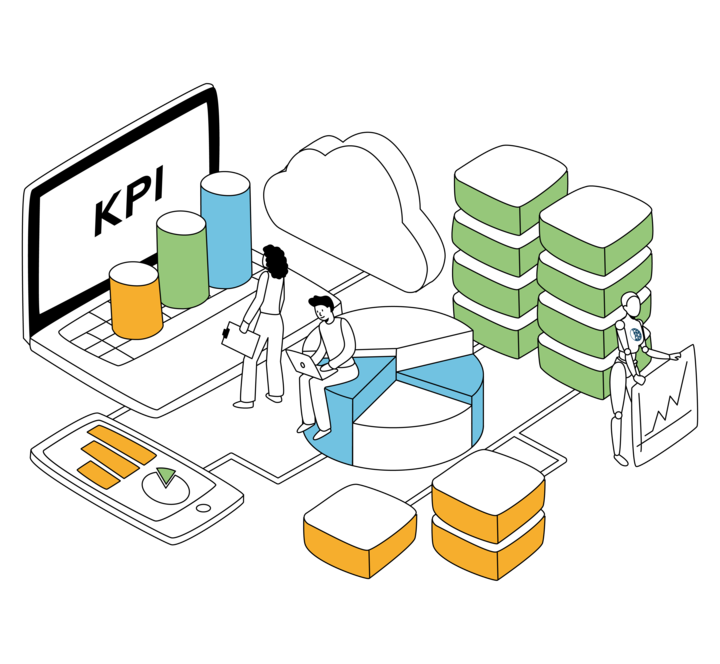Among the innovations and new features in HR Tech, Automation, AI and Machine Learning are catching up like wildfire. Although recruitment automation is not a new concept, it is complementing the HR transformation initiatives leveraging Robotic Process Automation (RPA).
We address the underlying technologies in play, how to deploy recruitment automation in an organisation, and what the expected benefits of deploying recruitment automation technology are.
WHAT IS ROBOTIC PROCESS AUTOMATION (RPA)?
For businesses, Robotic Process Automation is the application of technology that allows employees in a company to configure computer software or a “robot” to capture and interpret existing applications for processing a transaction, manipulating data, triggering responses and communicating with other digital systems.
RPA tools perform “if, then, else” statements on structured data, typically using a combination of user interface (UI) interactions, or by connecting to APIs to drive client servers, mainframes or HTML code. An RPA tool operates by mapping a process in the RPA tool language for the software “robot” to follow, with runtime allocated to execute the script by a control dashboard.
Just as industrial robots are remaking the manufacturing industry by creating higher production rates and improved quality, RPA bots are transforming the way we think about administrative processes, IT support processes, workflow processes and even engagement processes. According to Forrester Research, the global RPA market will grow to $22 Billion by 2025. Some of the core features found in many RPA platforms include application control, optical character recognition (OCR), surface automation, and central management.
It’s not a question of if RPA and intelligent bots will be part of companies’ business workflows but when your company will adopt this new technology. As before the early adopters will have gained a huge competitive advantage over lagging followers.
WHAT ARE THE BENEFITS OF ROBOTIC PROCESS AUTOMATION?
Accuracy
Low Technical Barrier
Non-invasive technology
Compliance
Consistency
Productivity
Reliability
Improved Employee Morale
REAPING THE BEST VALUE OUT OF RPA?
- fewer than five processes,
- fewer than 500 clicks, and
- fewer than five workflows/HR functions
Text mining applied to unstructured data
Process management
Better analytics to reduce bots maintenance costs
WHAT IS RECRUITMENT AUTOMATION?
Recruitment Automation was born from the need for streamlining and maximising recruiters’ productivity. There are many monotonous and repetitive tasks a recruiter has to do on a daily basis, such as resume screening, acknowledging and rejecting applicants, scheduling interviews, etc. As mentioned above, there is an increase in the volume of resumes recruiters now need to work with (due mainly to the multiplication of channels where for sourcing candidates and applicants: career sites, social media platforms, job boards, etc). A recruiter’s ability to select, pick, engage and communicate with top hires and highly qualified candidates shrinks with these mounting challenges. According to Jobvite research in 2018, 80% of the time spent in the upper part of the recruitment funnel could be automated. Ideal boasted in 2017 of their ability to reduce the cost per hire by 71% for their clients using recruitment automation tools.
Recruitment Automation technology is able to screen thousands of CVs using advanced algorithms, select the best or best-fit candidates for specific roles, send emails, texts or arrange calls with pre-employments tests and questions to eliminate unqualified or not-best-fit candidates for the recruiters and hiring managers. The direct involvement of recruitment consultants starts only after a shortlist of candidates is made available.
Recruitment Automation technology can increase the overall efficacy of the recruitment process while improving the recruiters’ productivity and the candidates’ experience.
WHAT IS THE STATE OF RECRUITMENT AUTOMATION TODAY?
Automation in recruitment is not a new concept. During the 1990s, recruiters and HR professionals began using technology to track applicants. Nowadays the technology is widespread within Applicant Tracking Systems and Candidates Relationship Management systems. This comes in many key features such as recruitment Chatbots.
Replacing some of the tasks done by humans with automated “bots” has some risks, and some of the benefits can be elusive both for the candidates/applicants or recruiters. There is a wide acceptance that automation should be applied to three categories of the recruitment process: Candidate Discovery (Sourcing and processing), Candidate Engagement and Outreach. The most successful talent teams have effectively put to use recruitment automation to solve some of the biggest recruitment challenges of today:




